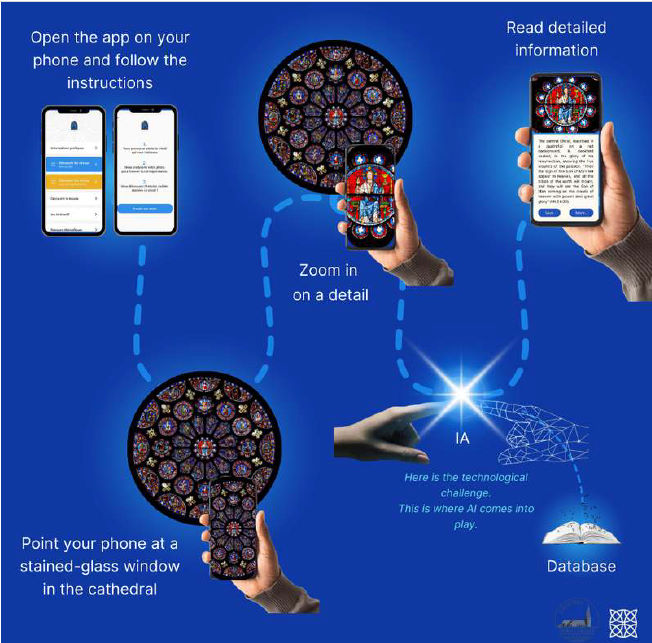An app to get closer to stained glass
The Centre international du Vitrail de Chartres (Chartres International Stained Glass Center) is planning to develop an artificial intelligence application, free of charge and accessible to all, that will tell the story of stained glass windows and reveal their meaning. Using an interactive map of the cathedral and a stained glass digital recognition mode, a tablet or cell phone will enable visitors to the cathedral to look at a stained glass window and automatically display the information they need to understand it: image content, reading direction, symbolism, role in the building and liturgy, techniques used by the master glassmakers.
Each medallion in a stained-glass window can be selected. Clicking on the medallion gives the visitor detailed information on the scene depicted and the simple or historical characters involved. Thanks to the ability to save the stained-glass windows that interest them, visitors can then visit the Musée du Vitrail to explore them in greater depth with the digital encyclopedia of stained glass, in large format on giant interactive screens. The tool will be accessible to all.
Why use artificial intelligence?
The emergence of artificial intelligence has enabled us to find solutions to the problems we face.
To do this, we need to take into account the 2 fields necessary for the realization of such a project
1 – On the one hand, information specific to each stained-glass window.
Since its creation, the Centre International du Vitrail has been working with leading experts to organize this information.
2 – On the other, the need for a transmission interface.
This is where artificial intelligence finally gives us the means to make it happen.
A project supported by American Friends of Chartres
